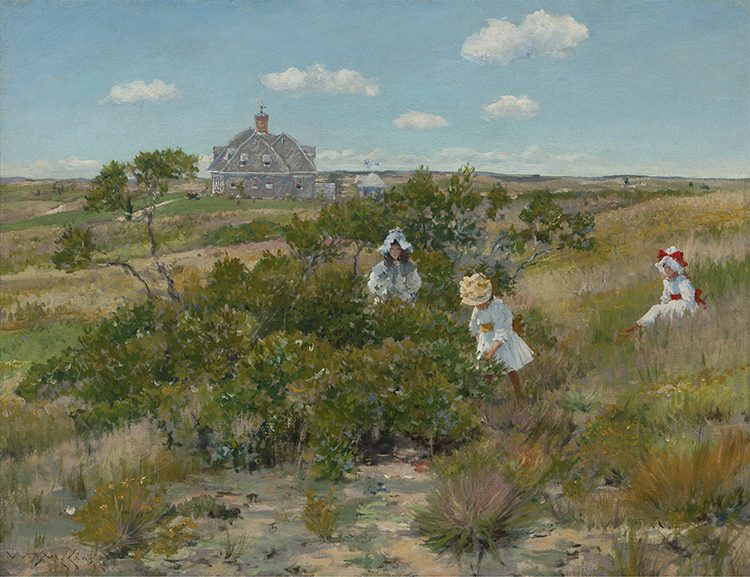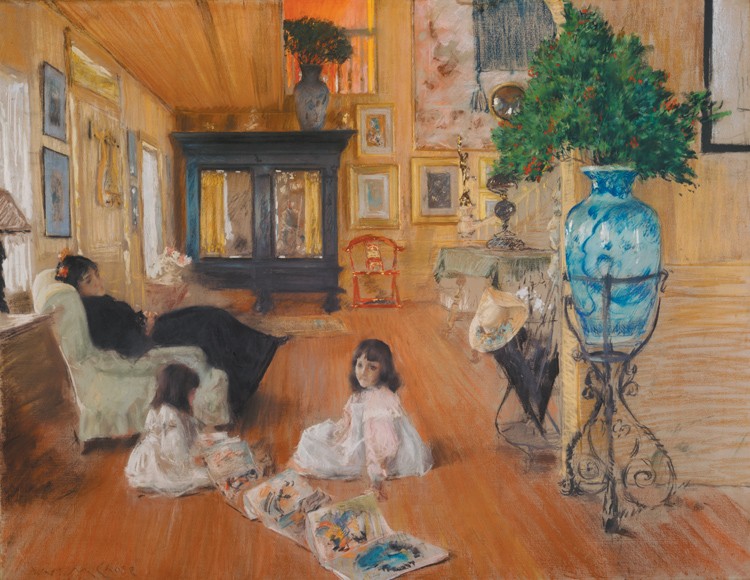
William Merritt Chase, The Big Bayberry Bush, c. 1895. Oil on canvas, 25 1/2 x 33 1/8 in. Parrish Art Museum, Southampton, New York, Littlejohn Collection
A true plein-air artist, William Merritt Chase painted right out “under the sky,” working directly on the canvas to capture his immediate impressions of the area surrounding his home in Shinnecock Hills, where he taught annually from 1891 to 1902. Completed about midway through his Shinnecock years, The Big Bayberry Bush is a singular example of how Chase distilled “the harmony which I see in nature.” With an eye for color and spatial arrangement, Chase positions his three eldest daughters in bright white frocks with colored accessories playing near a bayberry bush in a flat, open terrain of brush and sand dunes near their summer home. Their varying poses and placements in the scene create a dynamic, triangular movement that leads the viewer’s eye in a zig-zag line from the foreground to the distant Stanford White-designed shingle-style home on the distant horizon before resting on the serene blue sky above. The warm burnt umber tones against the cool grays and pale azure sky suggest the passing of summer into early autumn. A critic later praised the work for “its admirable atmospheric effect, and for the deft description of summer sunshine.”
Elsa Smithgall, Exhibition Curator

